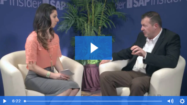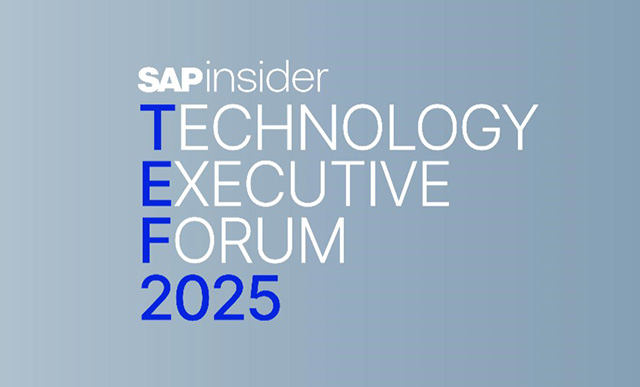SAP Label Printing
Filter By
Browse By
- SAP Analytics and AI
- SAP Application Development and Integration
- All SAP Application Development and Integration
- SAP ABAP
- SAP ABAP Development Tools
- SAP ABAP Test Cockpit
- SAP API Management
- SAP BAPI
- SAP Basis
- SAP BRF
- SAP Business Application Studio
- SAP CMS
- SAP Design Studio
- SAP Development Tools
- SAP DevOps
- SAP EAI
- SAP EDI
- SAP Extension Suite
- SAP Fiori
- SAP Fiori Elements
- SAP Integration Suite
- SAP Low Code Application Development
- SAP Low Code Automation
- SAP Netweaver
- SAP Release Management
- SAP UI5
- SAP Web Application Server
- SAP Web IDE
- SAP Business Process Management
- SAP Center of Excellence
- SAP CIO
- SAP Customer Experience
- SAP Data and Data Management
- All SAP Data and Data Management
- SAP BW
- SAP BW/4HANA
- SAP Crystal Reports
- SAP Data Archiving
- SAP Data Center
- SAP Data Governance
- SAP Data Integration
- SAP Data Migration
- SAP Data Quality
- SAP Data Services
- SAP Data Strategy
- SAP Data Visualization
- SAP Data Warehouse Cloud
- SAP DMS
- SAP Document Control
- SAP EIM
- SAP ETL
- SAP ETL Tools
- SAP HANA
- SAP HANA Administration
- SAP HANA Deployment Infrastructure
- SAP HANA Studio
- SAP Master Data
- SAP Master Data Governance
- SAP MDM
- SAP Enterprise Architect
- SAP Enterprise Asset Management
- SAP ERP
- SAP Finance
- All SAP Finance
- SAP Accounting
- SAP AR AP
- SAP Asset Accounting
- SAP Billing Systems
- SAP BPC
- SAP BRIM
- SAP Cash Management
- SAP Central Finance
- SAP Controlling
- SAP COPA
- SAP Cost Center Accounting
- SAP Currency Risk
- SAP e-invoicing
- SAP FICO
- SAP Finance Automation
- SAP Advanced Financial Closing
- SAP Financial Consolidation
- SAP Financial Planning
- SAP FX Risk
- SAP General Ledger
- SAP Global Tax Management
- SAP Hyperion
- SAP Order to Cash
- SAP Payment Processing
- SAP Profitability Analysis
- SAP Rebate Management
- SAP S/4HANA Finance
- SAP SWIFT Compliance
- SAP Treasury Management
- SAP Universal Journal
- SAP Governance Risk and Compliance
- SAP Human Capital Management
- SAP Intelligent Technologies
- SAP Platform and Technology
- All SAP Platform and Technology
- SAP Business Technology Platform
- SAP Cloud
- SAP Cloud Connector
- SAP Cloud Integration Platform
- SAP Cloud Migration
- SAP Cloud Platform
- SAP Cloud Providers
- SAP Cloud Strategy
- SAP Digital Signature
- SAP Container Platform
- SAP HANA Enterprise Cloud
- SAP Digital Asset Management
- SAP Smart Forms
- SAP HEC
- SAP Digital Integration Hub
- SAP Hyperscalers
- SAP Infrastructure
- SAP Messaging
- SAP Quality and Testing
- SAP Security
- SAP Spend Management
- SAP Supply Chain Management
- All SAP Supply Chain Management
- SAP APO
- SAP Asset Management
- SAP Business Network
- SAP Digital Manufacturing Cloud
- SAP Digital Twin
- SAP EWM
- SAP IBP
- SAP Inventory Management
- SAP Label Printing
- SAP Logistics
- SAP Manufacturing
- SAP Manufacturing Automation
- SAP MES
- SAP MII
- SAP MM
- SAP MRO
- SAP MRP
- SAP Order Management
- SAP Plant Maintenance
- SAP PLM
- SAP Production Planning
- SAP S&OP
- SAP SD
- SAP SPM
- SAP Supply Chain Planning
- SAP Track and Trace
- SAP Transportation Management
- SAP System Administration
Supply Chain: SAP Label Printing
Misprinted labels come with a high cost. Identifying areas for improvement will help organizations build a comprehensive labeling strategy, helping them to become more competitive in today’s global market.
Label Printing Simply Defined
Labeling is a type of material that is affixed to an item providing information about the content and origin. The label usually draws data from an inventory management system to display specifications on the label. Standardized and centralized labeling solutions are emerging as a key component of a solution to reduce the cost of each label.
Supply Chain: SAP Label Printing
Misprinted labels come with a high cost. Identifying areas for improvement will help organizations build a comprehensive labeling strategy, helping them to become more competitive in today’s global market.
Label Printing Simply Defined
Labeling is a type of material that is affixed to an item providing information about the content and origin. The label usually draws data from an inventory management system to display specifications on the label. Standardized and centralized labeling solutions are emerging as a key component of a solution to reduce the cost of each label.
Why is Label Printing Important?
Labeling generates value from the supply chain network to improve efficiency and meet customer demands. When organizations extend label printing to partners and suppliers, they can avoid downstream errors and eliminate needs for relabeling. Because many supply chains have multiple facilities, it’s important they all follow the same standardized labeling process, leveraging the same data set. Organizations having their own digital label printer could enable relatively cheap labels leading to greater profit margins.
5 Ways Labeling Can Affect the Supply Chain
- Stocking: A centralized system where users oversee label data helps minimize errors.
- Recalls: Errors on labels can lead to product recalls.
- Warehouse: Establishing a good warehouse labeling practice can reduce the processing time for warehouses.
- Shipping: A misspelling, incorrect description, or empty field can be costly and hold a cargo shipment for weeks.
- Product details: Some countries, industries, and products have more strict regulations than others, but a violation in any of them can result in high fees.
Key Benefits of Label Printing are:
- Meet regulatory requirements
- Managing quality requirements
- Improve process efficiency
- Build process agility and resilience
As organizations look for ways to leverage technology to develop agile supply chains, centralized labeling capabilities are emerging as a key tool. A solution needs to be one that is dynamic, and data-driven, and automates labeling processes for global standardization.
Vendor partners for software solutions or operational intelligence include: SAP, BCC Distribution or Reveal.
Key Considerations for SAPinsiders are:
- Reducing Supply Chain Complexity Through Integrated Labelling: Kumar Singh with SAPinsider, shares an article about the critical role of labeling centralization and standardization in supply chains.
- How Stemcell Technologies Automated It’s Labeling Processes by 80%: Read the article on how two companies working together to automate labeling and reduce the number of label templates by 80%.
10 results
-

Creating a Roadmap for Sustainable Labeling in the Cloud
Reading time: 1 mins
A cloud-first labeling approach means better traceability, less scrap, fewer labeling errors, and less rework. Today’s consumers see themselves as catalysts for change. More of them are intertwining sustainability into their purchase decisions, effectively forcing brands to implement and use sustainable business practices that meet or exceed customers’ expectations around environmental, social and governance (ESG).
-

Siemens Standardizes Labeling Across its Global Factories to Drive New Levels of Efficiency
Reading time: 2 mins
Siemens’ labeling-as-a-service solution, powered by NiceLabel’s LMS provides centralized labeling that can easily deliver critical real-time labels to highly automated manufacturing and logistics environments.
-

An interview with GS1 US: What does the future hold for supply chains?
Reading time: 5 mins
Many business leaders were holding out hope that supply chains would recover as the effects of the pandemic recede. However, a recent White House report argued that supply chain disruption is here for the foreseeable future.
-
-

Reducing Supply Chain Complexity Through Integrated Labeling
Reading time: 6 mins
by Kumar Singh, Research Director, Automation & Analytics, Supply Chain Management, SAPinsider Supply chain disruptions are on the rise and one of many key reasons is the ever-increasing complexity of global supply chains. Complex SKU portfolios, scattered global manufacturing and distribution footprint, evolving customer segments, omnichannel, these are some of the examples of the factors that…
-

Role of Integrated Labeling Solutions in Reducing Supply Chain Complexity
Reading time: 6 mins
by Kumar Singh, Research Director, Automation & Analytics, Supply Chain Management, SAPinsider Complex SKU portfolios, scattered global manufacturing and distribution footprint, evolving customer segments, rise of omnichannel are examples of the aspects that are contributing to the ever increasing complexities of supply chains today. Organizations leveraging SAP ERP are no exception to this complexity trend.…
-

How Stemcell Technologies Automated Its Labeling Processes — Reducing Templates by 80%
Reading time: 5 mins
By integrating SAP S/4HANA with a validated label management system to automate labeling and digitize labeling quality assurance (QA), SAP customers can eliminate opportunities for errors and reduce the number of label templates they use. Learn how Stemcell Technologies underwent a greenfield SAP S/4HANA implementation, which became a catalyst for process reengineering, specifically around labeling.…
-

Master Barcode Labeling from SAP S/4HANA, SAP ECC and SAP EWM
Reading time: 27 mins
Thank you for registering for this live Q&A on how SAP customers use Enterprise Labeling Solutions. Please find the transcript below. Matthew Shea: Hello and welcome to today’s SAPinsider live Q&A. We will be discussing how SAP customers that use SAP ERP Central Component (SAP ECC), SAP S/4HANA, and SAP Extended Warehouse Management (SAP EWM)...…
-
-

Best Practices to Streamline Your Supply Chain Labeling from SAP and SAP S/4HANA
Reading time: 12 mins
Thank you for registering for this live Q&A. Find the transcript on supply chain labeling below. Matthew Shea: Hello, and welcome to today’s SAPinsider live Q&A. We will be chatting for the full hour about Enterprise Labeling Solutions and how SAP customers can leverage them to keep up with changing customer demands, comply with regulatory...…
-

Reduce Indirect Costs with Next-Generation Labeling
Reading time: 3 mins
Labeling is a mission-critical process for many organizations. If labels aren’t printed correctly, products aren’t shipped, leading to major disruption in the supply chain that can not only affect the bottom line, but also a company’s reputation. This article shows you how to use label management tools with your SAP system to meet the needs…
-

Live from SAPinsider Studio: Ken Moir Discusses Standardizing Labeling for the Modern Supply Chain
Ken Moir, VP of Marketing at NiceLabel, joins the SAPinsider Studio at the SCM, CRM, and IoT 2016 event in Las Vegas to talk about labeling challenges and how NiceLabel and SAP work together to deliver a standardized labeling and marking process that mitigates risk and increases agility. Here is an edited transcript of the...…
Become a Member
Unlimited access to thousands of resources for SAP-specific expertise that can only be found here.
Become a Partner
Access exclusive SAP insights, expert marketing strategies, and high-value services including research reports, webinars, and buyers' guides, all designed to boost your campaign ROI by up to 50% within the SAP ecosystem.
Upcoming Events
-

SAPinsider Technology Executive Forum
December 02 - 03, 2025
Phoenix, Arizona
United States
View Event
Related Vendors
Your request has been successfully sent

